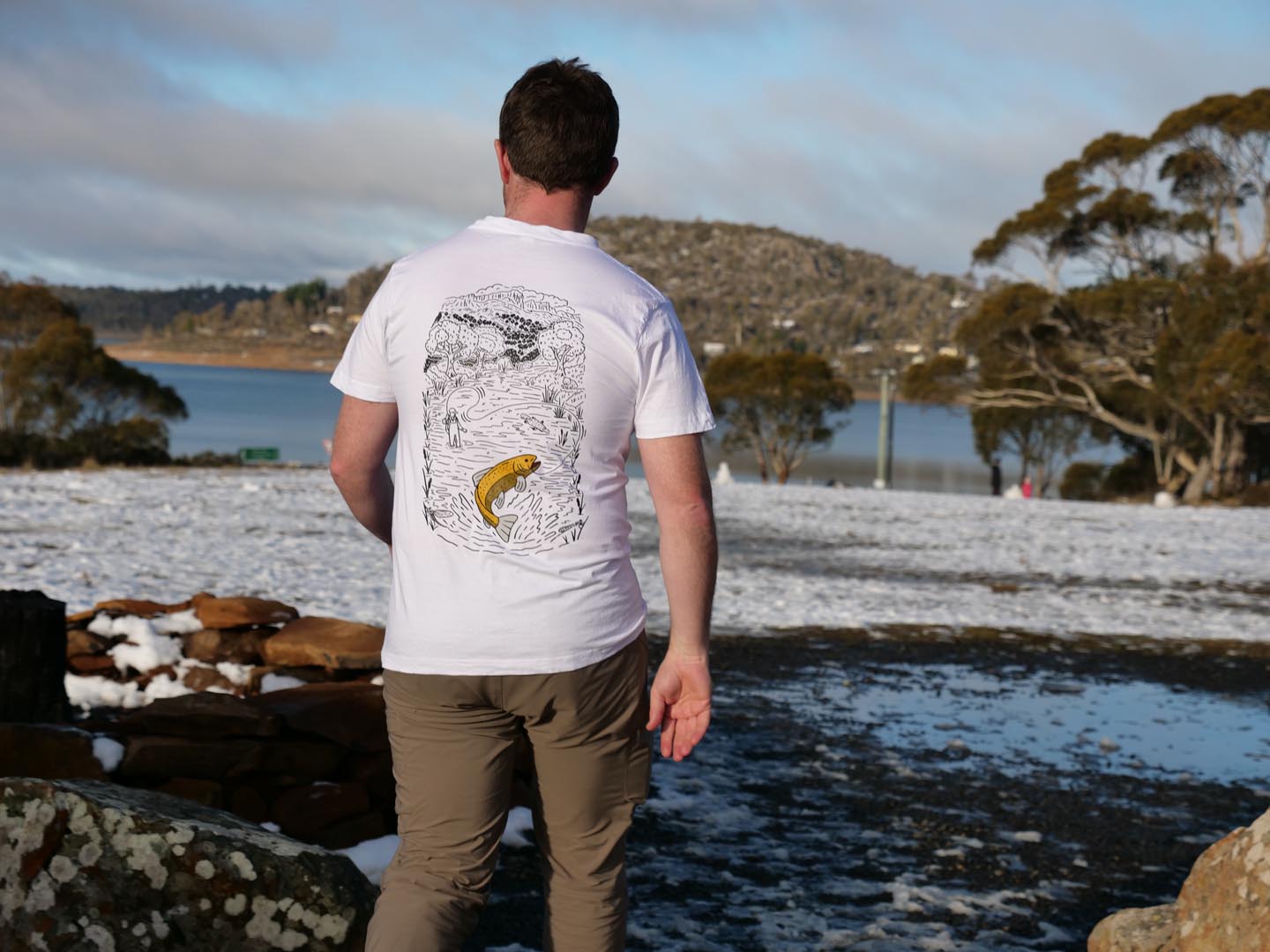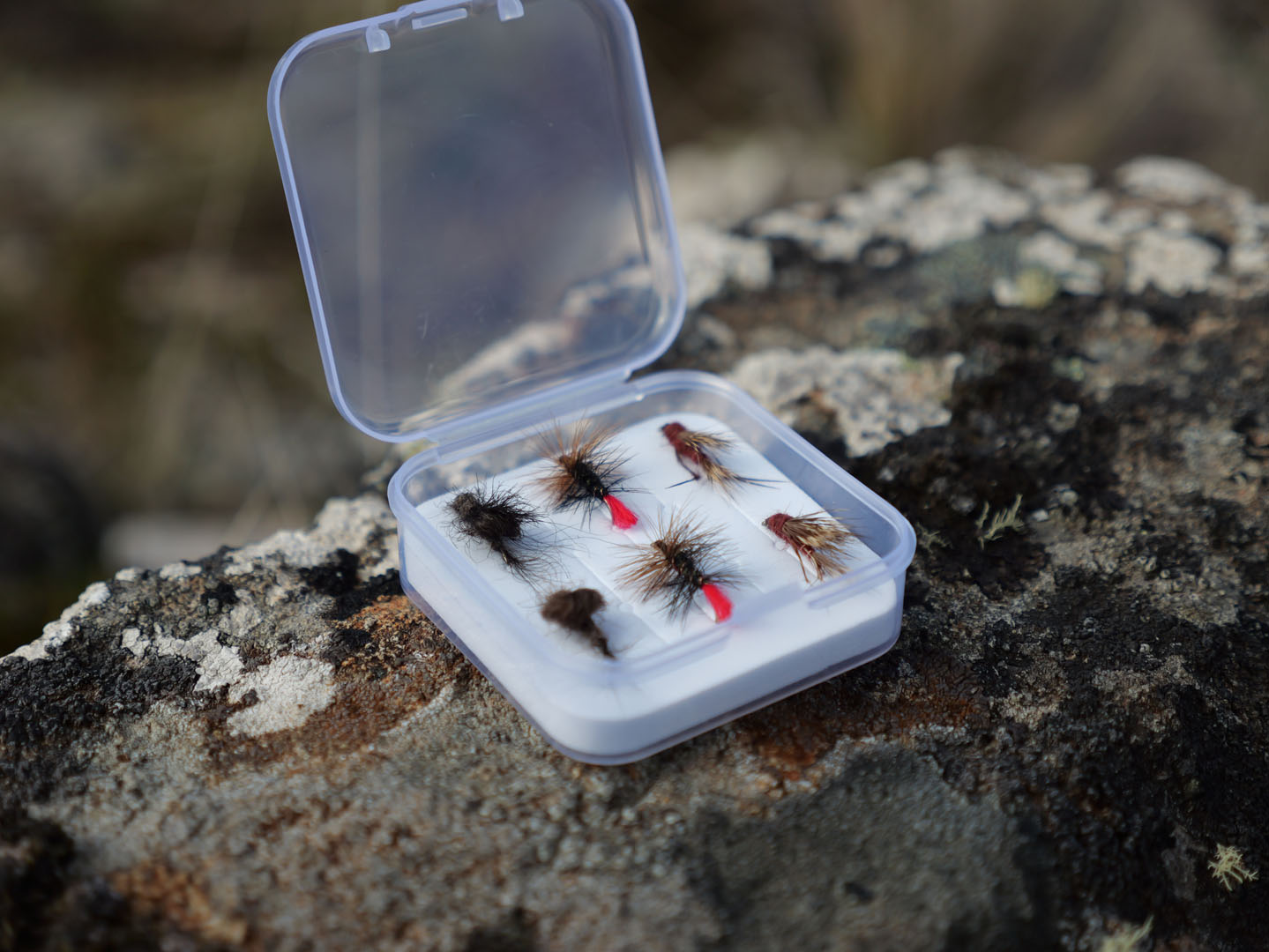Well known for it's diverse water types, this post dives into the world of river fly fishing in Tasmania including a technique-specific focus to ensure a successful trout fishing trip.
As we often mention on the Trout Tales fly fishing blog, Tasmania is a haven for anglers who seek pristine rivers, an abundance of trout as well as an array breathtaking natural beauty.
Whether you're a seasoned fly fishing enthusiast or a beginner who is looking to cast your first line, Tasmania offers a unique experience that will leave you wanting more.
One of the reasons why Tasmania is a paradise for trout fishing is its thriving fish population - with both impressive wild brown trout and rainbow trout found in the rivers, providing an exciting challenge for anglers.
So when fly fishing Tasmania's small streams or larger rivers, the diversity of fishing locations offer a variety of opportunities to test your skills (if you're also interested in lake fishing in Tasmania, we'll be writing about this soon too!).
When it comes to river fly fishing methods in Tasmania, reading each section of water you encounter and choosing the best technique to suit throughout a day’s fly fishing will be the difference between a good day and an amazing day.
Understanding how fish behave when river fishing, and where they are likely to sit in different water types, will greatly increase your success - so read on to learn more about how we like to go about things when fly fishing in rivers and streams.

Water types in a river
When river fly fishing in Tasmania, all rivers will vary greatly from fast to slow water, deep to shallow water, bottom structure, vegetation, and the list goes on.
Trout will make themselves at home anywhere in the river that they;
1. Feel safe from predators.
2. Aren’t using too much energy.
3. Can find the best supply of food coming downstream.
These factors will then impact where they choose to hold in different types of runs. Reading and observing these factors correctly will give you the vital information needed to decide which technique to choose.
For example, a fast slowing, shallow run will see the fish holding close to the bottom, where the flow of the current is slower as it gets broken up by the riverbed, with food such as nymphs, worms and larvae being washed out from under rocks and logs making for easy pickings, as well as cover from any predators (including the odd fisherman!)
On the other hand, slow and deep pools will usually bring the trout closer to the surface as they can easily hold just under the surface film and take advantage of a range of insects and bugs floating downstream in a bubble line or seam. If there are no signs of rising fish in this type of water, wet fly fishing with weighted flies such as woolly buggers can also be effective.
Keep in mind that every run is different, and it may take a few attempts to work out the best way to get your flies in front of the trout and increase your trout fishing success.
Learn more: The ultimate guide to the 2023/2024 Tasmanian fly fishing season.

The three main techniques we use when river fishing in Tasmania are;
1. Single dry fly – a dry fly attaching to a 12-15ft 6X leader and floating line.
2. Nymph under dry – a dry fly with a nymph hanging underneath with a 3-4ft dropper.
3. Euro nymphing – heavily weighted nymphs fished without an indicator.
Each of these fly fishing techniques are effective when fished in the correct water types.
Slow deep pools often suits dry fly fishing as the fish can rise easily to the food drifting slowly down the river. Nymphing will be less productive in this water given the slower drift. Flies such as royal wulffs, parachute adams, black ants, mayfly patterns and large terrestrial patterns often work well. If there are no signs of rising fish in this type of water, wet fly fishing with weighted flies such as woolly buggers can also be effective.
Fast, riffly water often means euro nymphing is the best way to get a heavily weighted nymph down quickly through the fast water to the fish holding on the bottom.
With no indicator or dry fly, the weighted nymph can drop straight to the bottom and remain there for the entire drift, rather than being pulled back up to towards the surface by the indicator or dry fly.
Pheasant tail and hares ear nymphs work well for this style of wet fly fishing, and a range of bead weights from 2.5 - 4mm is essential for this style of nymphing so that you can adjust your weight to suit the depth of water being fished.
Wet fly fishing can also be worthwhile in this type of water by swinging larger streamer patterns downstream across the current to imitate small baitfish being swept downstream. Flies such as woolly buggers, fuzzle buggers and straggle buggers often work well.
Long gliding runs and steady flowing sections of rivers are classic nymph under dry water as both flies have a chance of being eaten.
The steady flow allows for a drag free drift of the dry fly and the nymph hangs in the strike zone for the entirety of the drift. Be sure to take your time in this water as the fish can sit in a range of different places depending on water levels, weather conditions, time of year and insect hatches present. Large dry flies such as stimulators, grasshoppers and stonefly patterns work well as indicators, whilst pheasant tail nymphs and caddis imitations generally do the job as droppers.
Practicing and perfecting these techniques will provide you with a lifetime of enjoyable days out on the river when fly fishing in Tasmania.
If you're planning a solo fly fishing trip, a family getaway, or a perhaps a group expedition with fellow anglers or friends - Tasmania has something to offer everyone.
When you're ready to experience the river fly fishing in Tasmania, or perhaps looking to improve your results when fly fishing rivers, get in touch with us to book your fly fishing adventure in Tasmania.
Feature Posts
Ready to book A trip?
Experience all of what fishing in Tasmania has to offer through a personalised fly fishing tour.
Book Now





